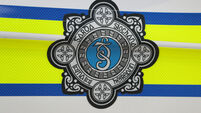Probe after light aircraft runs out of fuel
Five parachutists on board the Cessna 206 Stationair had exited the aircraft on the pilot’s instructions after it had suffered a temporary, partial loss of power as it had climbed to 9,000 ft.
Although the engine recovered, it subsequently stopped fully a short time later as it made its final approach to land at Clonbullogue Airfield, Co Offaly, on March 15, 2009.
The aircraft landed short of the runway in a ploughed field before turning upside down after its nose became embedded in the soft ground. The pilot, 68, suffered minor injuries and was taken to a nearby hospital but was later discharged.
A report by the Department of Transport’s Air Accident Investigation Unit (AAIU) blamed the accident on the Irish Parachute Club’s use of a wooden dipstick to measure fuel levels. It described its use as “an inappropriate method of monitoring the fuel consumption and fuel quantity on board the aircraft”.
An AAIU inspector found that the dipstick grossly over-read fuel levels when used immediately after refuelling as fuel had not settled in the tanks.
It also claimed the pilot’s lack of operational experience with a new aircraft type was a contributory factor.
An AAIU inspector found that the aircraft had already carried out 10 parachute drop flights earlier that day.
The pilot informed the AAIU that he estimated had 165 litres in its engine prior to refuelling and that another 165 litres were added during refuelling. He also noted that he did not trust the fuel gauges as they appeared unreliable.
The pilot said no low-fuel warning light had come on in the aircraft and he also expressed surprise that a fuel gauge had given a reading after the accident to suggest that there were still 113 litres of fuel in the tanks, even though both were, in fact, empty.
The AAIU issued a recommendation to the Irish Parachute Club to review its fuel monitoring system.













